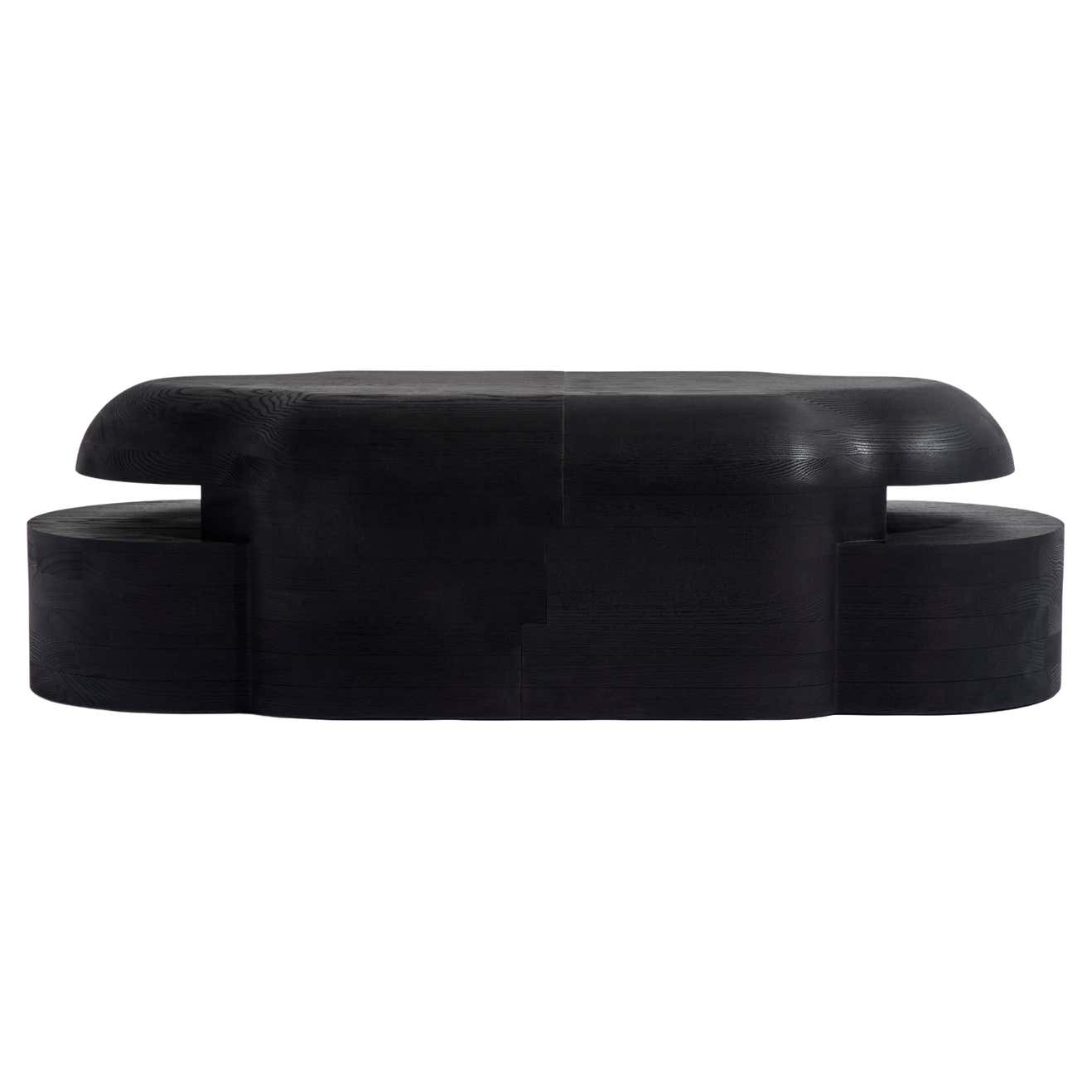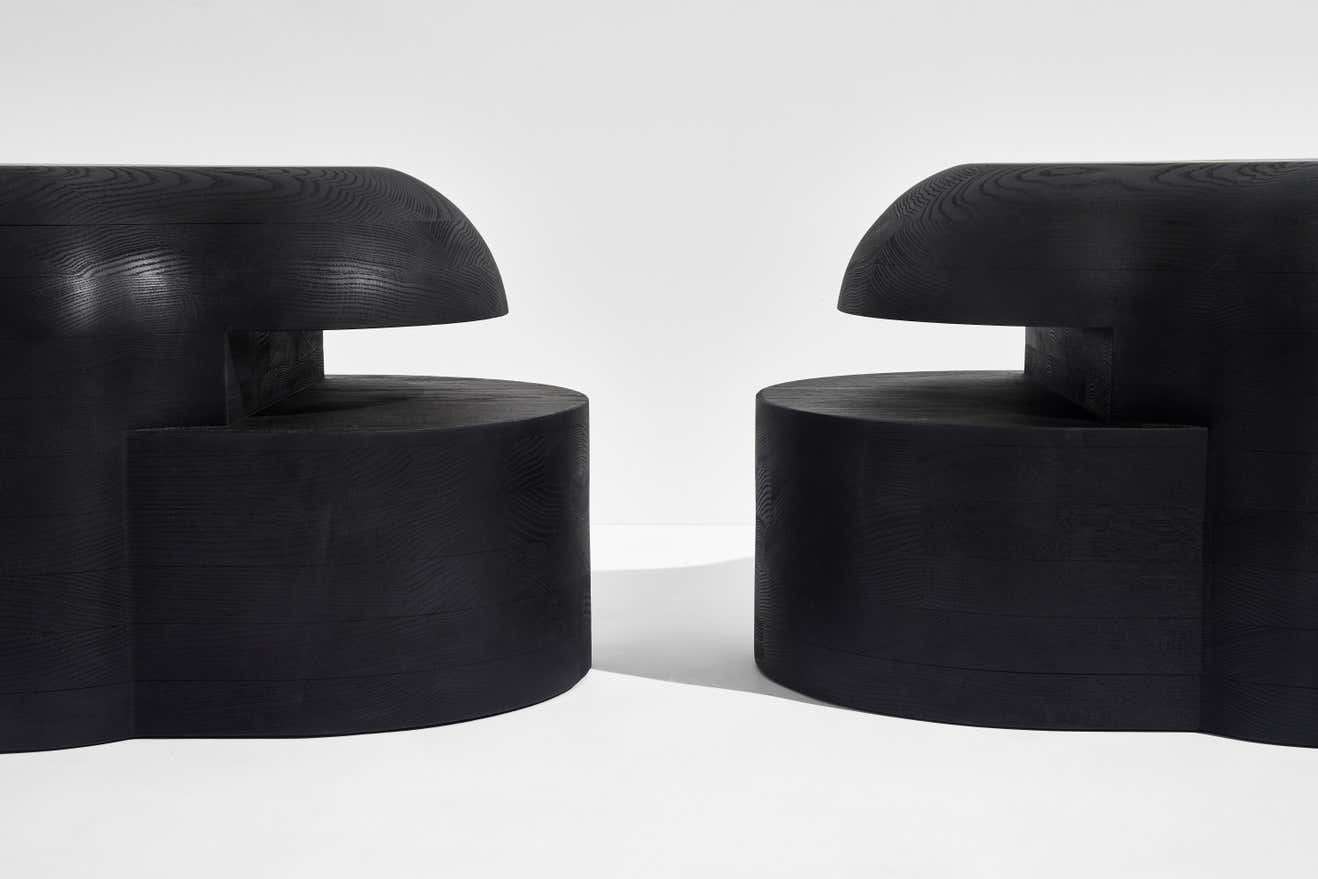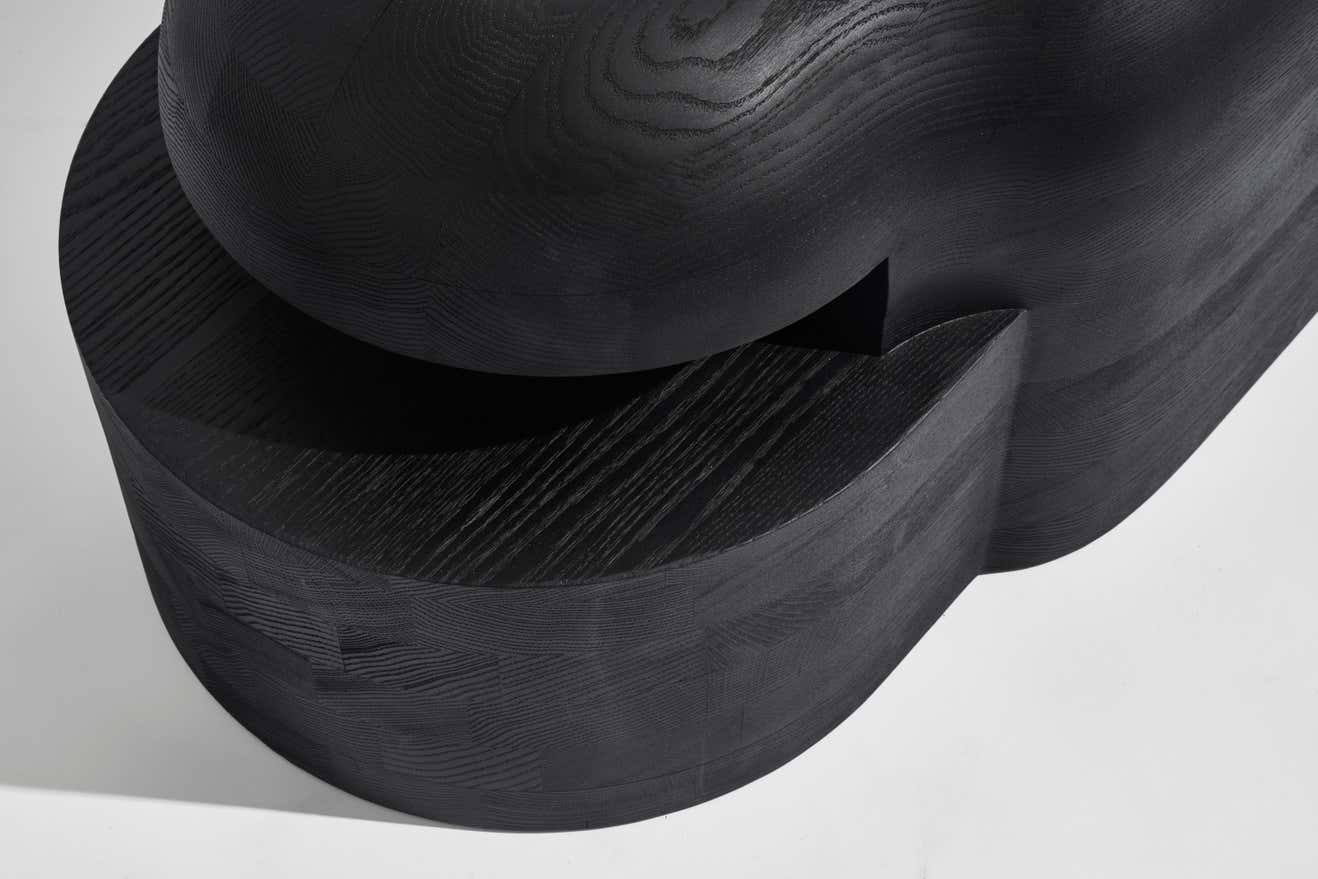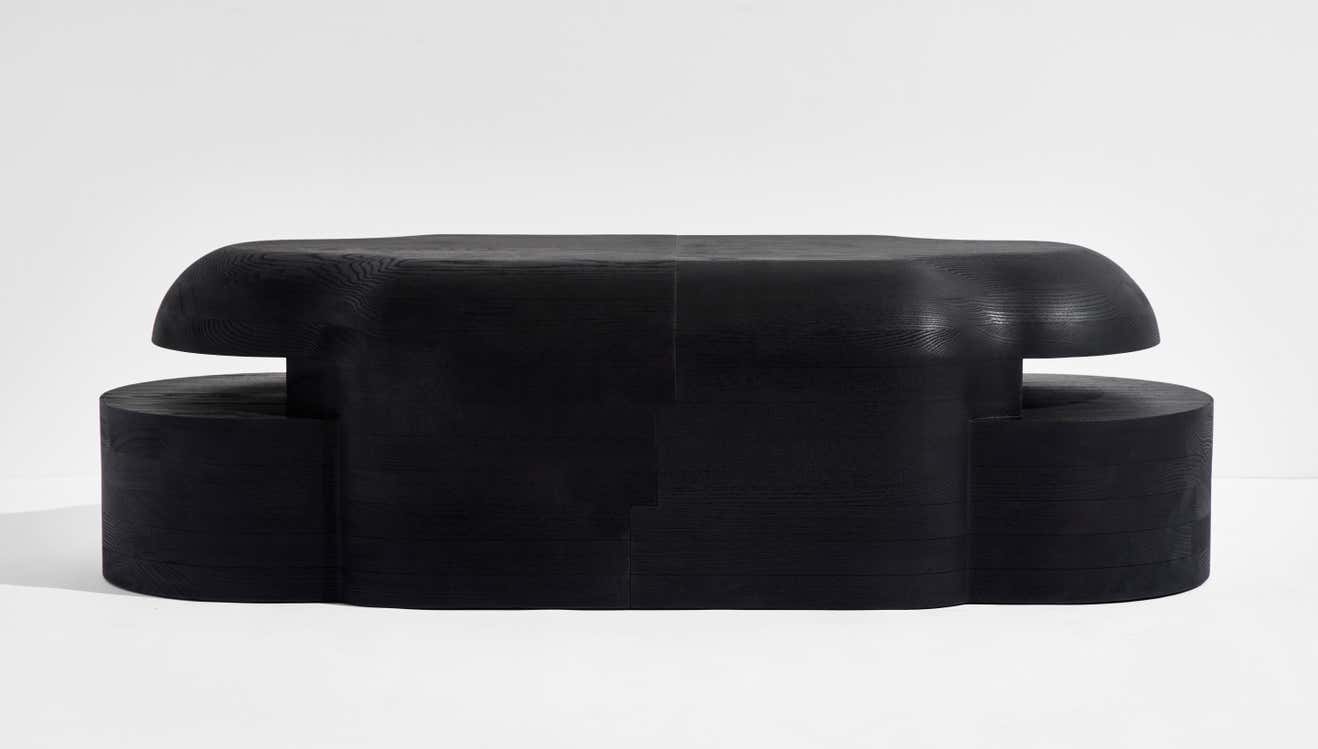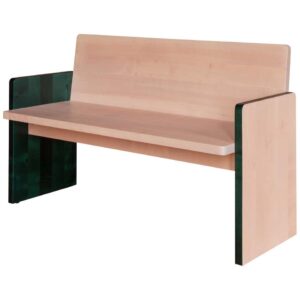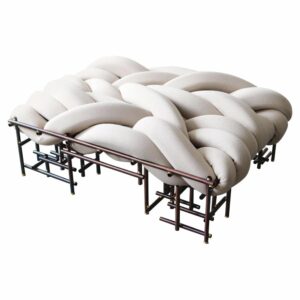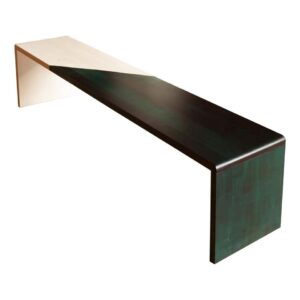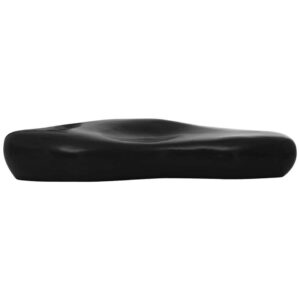Materials: Burned oak.
Set of 2
When I and my wife got home from the maternity ward in April 2020, we made sure that we were protected from the pandemic and isolated ourselves from everyone, even our families, to protect our newborn son. With the core values of the Discovered project, touch, reflection, and strength in mind, I reflected that our apartment was functioning like a bunker in that period of isolation, protecting ourselves from the outside world, and from that, I got the idea to make a bunker inspired furniture that would represent the emotional connection to these thoughts. My association with bunkers comes from the war in Iraq when I and my family protected ourselves in a room functioning as a bunker in our home. An experience that many still have, to protect themselves from a visible enemy and now we found ourselves fighting an invisible one today. Drawing from the similarities in experiences between my own childhood where there was a visible enemy to be protected from and my young sons where there was an invisible one. I then made two sculptural pieces of furniture to represent these two worlds defined by strong monolithic forms and a sense of stillness.
The sculptural pieces serve as a side table or stools and together as a bench or as a low sideboard, inspired by bunker architecture. I chose two contrasting kinds of wood: one half in American cherry, for its inherent warmth, and one half in red oak, its surface burned with the Japanese burning method called Shou sugi ban. The name Lahmu comes from Mesopotamian mythology of a protective deity that was supposed to ward off demons and sickness. The discovered project was initiated by Wallpaper magazine & AHEC and exhibited in the Design Museum in London in September 2021.

